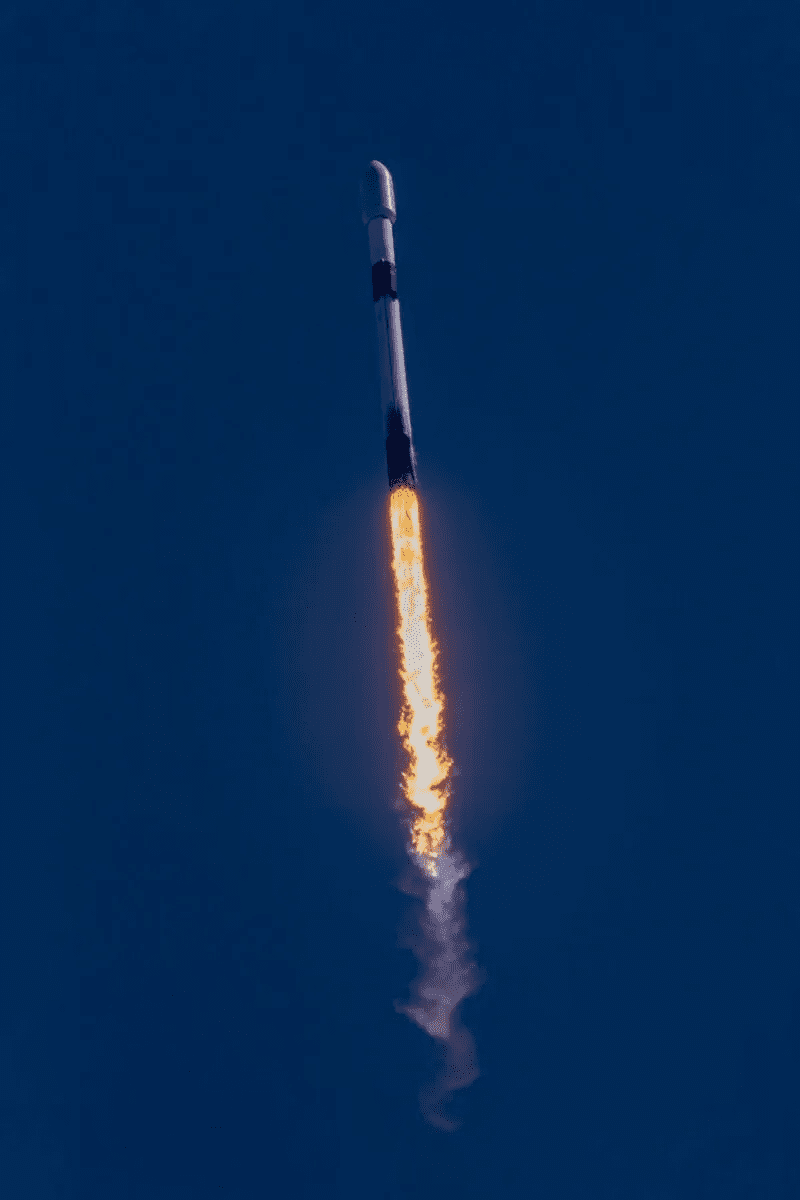SpaceX launched a Falcon 9 on March 9th, carrying a third batch of 40 OneWeb satellites into the Earth’s orbit. This will help the UK-based OneWeb further expand its broadband relay stations’ constellation to 582 operational units. Another 36 OneWeb satellites are set for launch later this month which will be carried by an Indian GSLV rocket. The company aims to possess a global coverage, with a final SpaceX flight adding the fleet to almost 650 satellites. Each satellite was successfully detached from the rocket in low Earth orbit, and OneWeb has made contact with them. The stage 1 booster previously used for 12 missions returned to Cape Canaveral Space Force Station’s nearby Landing Zone 1.
The solar-powered satellites will now use xenon ion thrusters to reach their operational altitude of about 745 miles. The satellites were initially deployed at an 373-mile-high orbit tilted just 87 degrees to the equator. SpaceX is sending thousands of low-altitude Starlink internet satellites to provide high-speed, low-latency broadband service for consumers around the world. The service will also be available for government agencies and commercial customers. OneWeb is focussing more on government/commercial maritime, aviation, and land-based mobility markets with its limited number of higher-altitude satellites.
OneWeb launched its initial commercial services limited to the upper edges of the northern hemisphere in 2021. The operator’s network is available only to enterprises and government customers in Alaska, Canada, the United Kingdom, Greenland, and the wider Arctic area. More satellites were launched late last year for spreading the services into the southern hemisphere and for densifying coverage. Satellites are yet to reach their final orbital destinations.
- Tesla Delays Affordable Model Y Production to Late 2025 Amid EV Market Pressure
- Aldi Pork Carnitas Alert: FSIS Warns of Metal Contamination in 16-Ounce Packages with June-July Use Dates
- Protected: Weekly Mailer Task
- GP Registration Online Now At 98.4% Of Practices As 3.8 Million Sign Ups Signal NHS Digital Shift
- Protected: Update the social media status in Content Calendar
OneWeb has been authorized to deploy only a total of 648 satellites for this constellation, and SpaceX will also launch an undefined number of spare OneWeb satellites on a Falcon 9 shared with other operators by late summer. The company had once planned to finish its constellation by the end of 2022 but now it has extended its schedule to January 2024 for a fully functional global coverage.

















